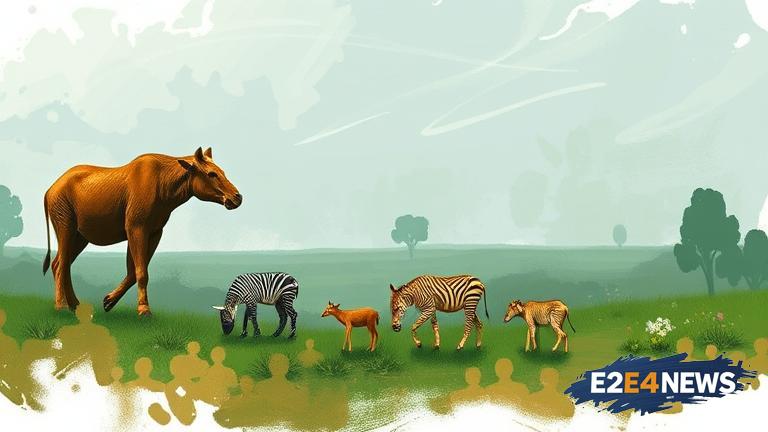The world of wildlife research is undergoing a significant transformation, thanks to the establishment of global networks that bring together experts from diverse disciplines and regions. These networks are revolutionizing the way scientists study and conserve wildlife, enabling them to tackle complex conservation challenges more effectively. By sharing knowledge, resources, and expertise, researchers can now gain a deeper understanding of the intricate relationships between species, habitats, and ecosystems. This collaborative approach is facilitating the development of innovative solutions to pressing conservation issues, such as habitat destruction, climate change, and human-wildlife conflict. One of the key benefits of global networks is the ability to leverage cutting-edge technologies, such as satellite tracking, genetic analysis, and machine learning, to monitor and analyze wildlife populations. These tools enable researchers to collect and analyze vast amounts of data, providing valuable insights into the behavior, migration patterns, and population dynamics of various species. Furthermore, global networks are facilitating the exchange of best practices and expertise between researchers, policymakers, and conservation practitioners. This exchange is helping to inform evidence-based conservation strategies, ensuring that efforts to protect wildlife are effective and sustainable. The establishment of global networks is also fostering international cooperation, enabling countries to work together to address transboundary conservation challenges. For example, the Convention on International Trade in Endangered Species of Wild Fauna and Flora (CITES) is a global agreement that regulates the trade of endangered species, while the International Union for Conservation of Nature (IUCN) provides a framework for conservation efforts worldwide. In addition, global networks are providing opportunities for early-career researchers to engage with established experts, promoting knowledge transfer and capacity building. This is helping to ensure that the next generation of conservation leaders is equipped with the skills and expertise needed to address the complex conservation challenges of the future. The impact of global networks on wildlife research is already being felt, with numerous success stories emerging from around the world. For instance, the use of satellite tracking has helped conservationists to monitor the migration patterns of endangered species, such as the Amur leopard and the African elephant. Similarly, genetic analysis has enabled researchers to identify the origins of seized wildlife products, helping to combat wildlife trafficking. Moreover, machine learning algorithms are being used to analyze large datasets, providing insights into the behavior and ecology of various species. The application of these technologies is not only advancing our understanding of wildlife but also informing conservation efforts, such as the development of effective conservation plans and the identification of priority areas for conservation. However, despite the many benefits of global networks, there are also challenges to be addressed. For example, the integration of data from different sources and the standardization of methods can be complex and time-consuming. Moreover, the involvement of multiple stakeholders can sometimes lead to conflicting priorities and interests. Nevertheless, the benefits of global networks far outweigh the challenges, and it is clear that international collaboration is essential for advancing wildlife research and conservation. In conclusion, the establishment of global networks is transforming the field of wildlife research, enabling scientists to better understand and protect endangered species. By leveraging cutting-edge technologies, facilitating international cooperation, and promoting knowledge transfer, these networks are helping to address complex conservation challenges and ensure a sustainable future for wildlife. As the world continues to face numerous environmental challenges, the importance of global networks in advancing wildlife research and conservation cannot be overstated. It is essential that we continue to support and strengthen these networks, ensuring that they remain a vital component of our efforts to protect the world’s precious wildlife. The future of wildlife conservation depends on our ability to work together, sharing knowledge, resources, and expertise to address the complex challenges that lie ahead. By doing so, we can ensure that future generations inherit a world where wildlife continues to thrive, and the natural beauty and diversity of our planet are preserved for years to come.





